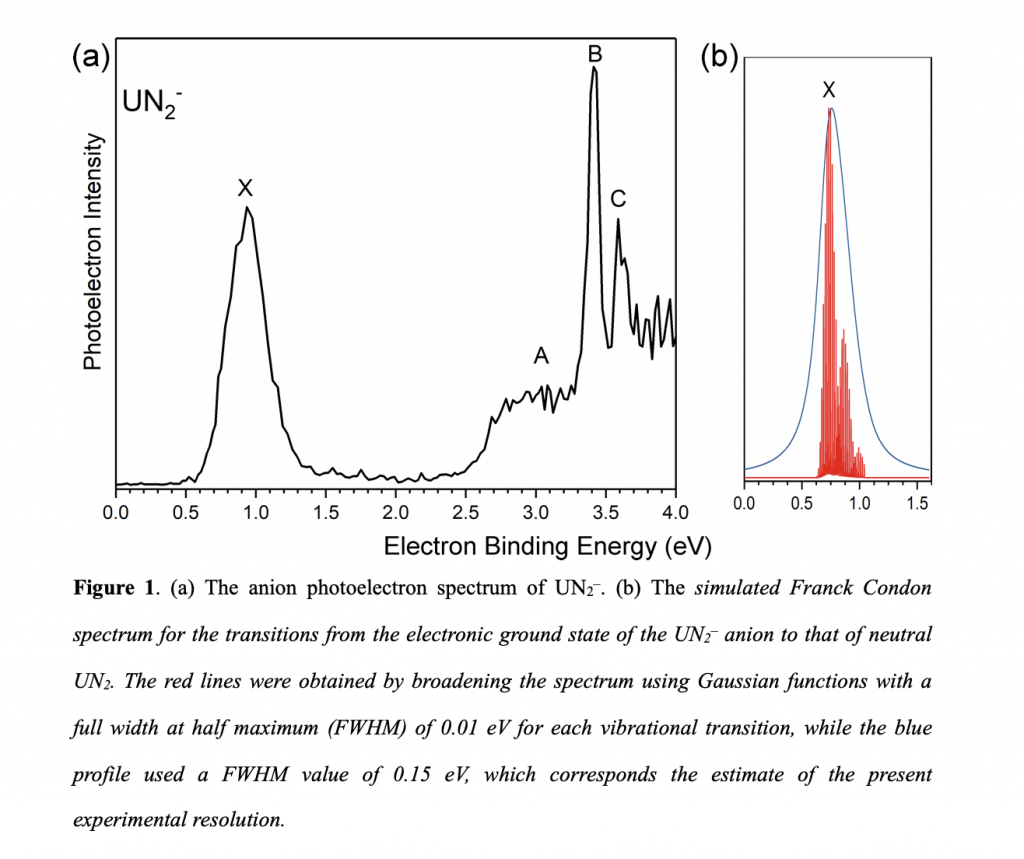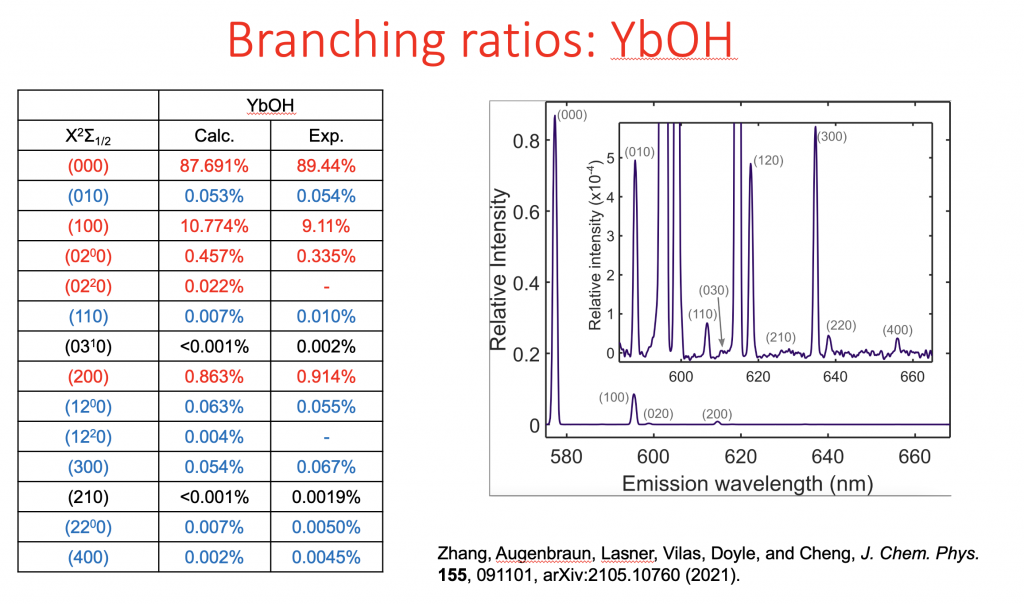The Cheng group develops new electronic-structure methods and applies them in chemical and spectroscopic studies. In our method-development work, we
(1) derive and play with equations to describe electron-electron correlation and relativistic effects,
(2) do computer implementation using old-schooled fortran language and also in modern C++ framework (we are co-authors of the CFOUR program, see www.cfour.de)
We also have fun computing molecular spectroscopy working in close collaboration with experimental colleagues
(1) Actinide spectroscopy.
See below a recent example for photoelectron spectrum of uranium dinitride molecule in collaboration with Bowen group in our department, J. Phys. Chem. A, 124, 6486-6492 (2020).

(2) x-ray spectroscopy and dynamics.
See below a recent example for calculations of x-ray absorption spectrum for a complex molecule in collaboration with the AMOS group at Argonne National Laboratory, from J. Phys. B: Atomic, Molecular and Optical Physics (2020)).

(3) spectroscopies of heavy-element small molecules of interest to search of fundamental physics through precision spectroscopy and deep laser cooling of molecules.
See below a recent example of calculations for vibronic branching ratios of the transition from an excited state of YbOH to the electronic ground state. Knowledge of all transitions with relative intensities above 0.00001 is needed for deep laser cooling this molecule. Our calculations and new experimental measurement of Doyle group at Harvard represent an improvement in sensitivity by two orders of magnitude compared with the previous state of the art. This enables probing subtle molecular physics and will advance fields including BSM physics searches through laser cooling of heavy-atom-containing polyatomic molecules and quantum computation through an informed choice of best molecules.

